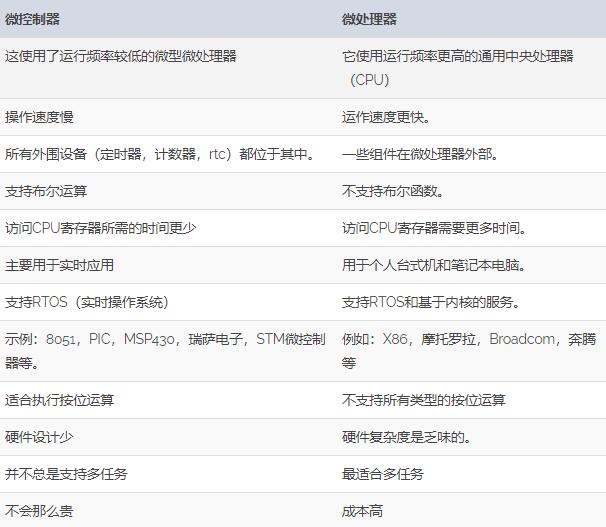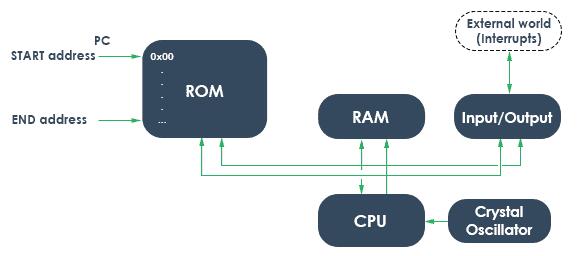What are the differences between microprocessors and microcontrollers?
In some cases, the term microprocessor or microcontroller is very confusing. However, they both have similar functions and add functions to microprocessors. Some manufacturers specify the term microprocessor other than microcontroller. However, this is not the case in all cases. To prove this, the following figure shows the difference between microcontroller and microprocessor.

When the power is turned on, the crystal oscillator will trigger the clock pulse and generate the frequency. After a period of time, the oscillator becomes stable.

Now, the microcontroller starts working from the program counter (PC). The program counter address is stored in ROM. The PC stores the address of the next instruction to be executed. It executes instructions from the start address (0x00) of the program counter. This address is sent to the instruction decoder, which will understand and complete the instruction.
(1) Advantages of microcontroller
The main advantages of microcontroller are low cost and small size. Easily connect peripherals through I / O ports. Moreover, the execution speed is faster in terms of speed and memory.
This is a key advantage to using microcontrollers other than processors in your application.
1. Ideal for dedicated applications.
2. Rigid in nature (i.e. one-time programmable)
3. Application development time becomes easy.
4. Simulator and simulator can be used for actual observation.
5. Easy to design and deploy.
(2) Disadvantages of microcontroller
When using microcontrollers, the most undesirable thing is that they cannot withstand high voltage. The main disadvantage of microcontroller is that the architecture is difficult to understand. In addition to the above, they have a limited amount of ram and are not suitable for performing parallel tasks at the same time.
2、 Application field of microcontroller
Microcontrollers have many applications. Here are some application scenarios:
1. The PWM (pulse width modulation) function in the microcontroller allows the DC motor to be driven.
2. Used in telecommunications, consumer electronics, test fixtures, smart meters, medical electronics, aerospace and other fields.
3. Human machine interface equipment.
4. Household appliances and lighting.
5. Automotive electronic equipment, used for electric power steering, braking, etc
6. Touch sensing solution.
7. Used for signal, door control, propulsion and braking in railway.
8. For automatic industrial control, PLC (programmable logic controller), motion controller, etc.
9. Battery management system for monitoring power level and current.
10. They are used for alternative energy sources (solar, wind, etc.) and transportation (elevators and cranes).
11. Robotics (for automation).





